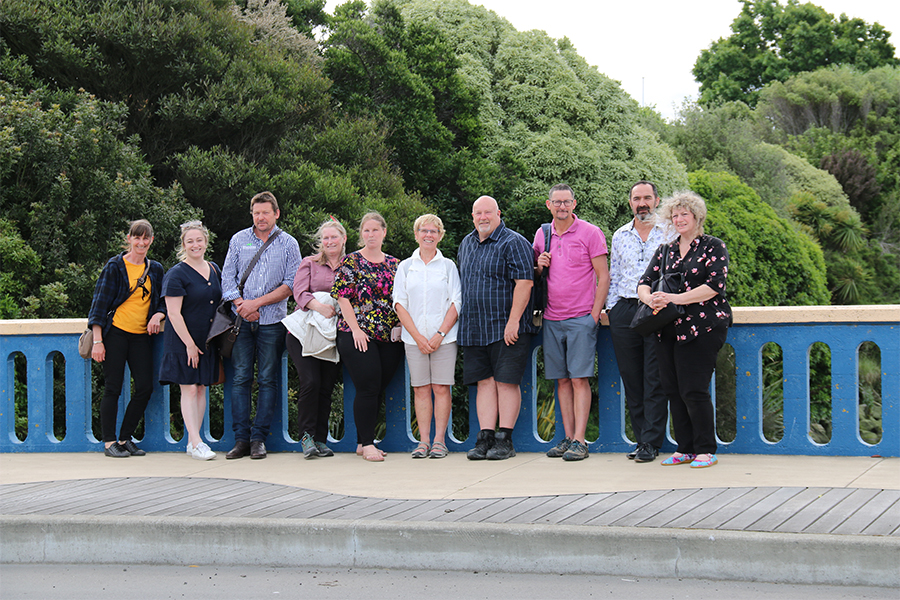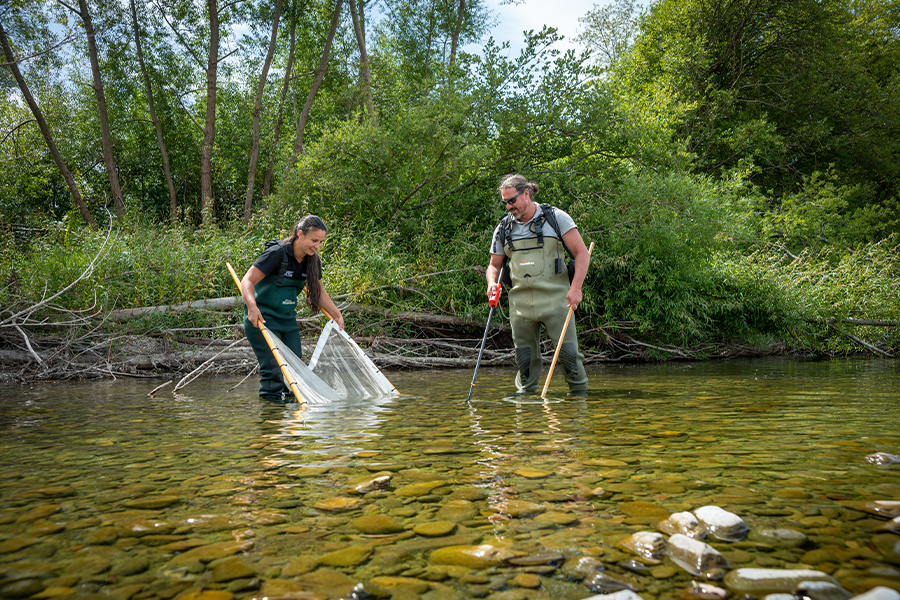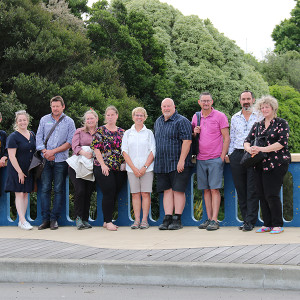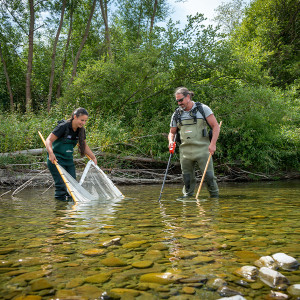Waimakariri Water Zone Committee Action Plan 2021-2024
Each of Waitaha/Canterbury’s water zone committees has an action plan which outlines how they will work with the community to deliver their aspirations for freshwater as outlined in the Canterbury Water Management Strategy (CWMS).
Revised July 2023
The CWMS puts the future of our water resources in the hands of the community. Zone committees work collaboratively to develop recommendations for councils and other organisations to deliver shared goals and targets.
Our purpose
To uphold the mana of the freshwater bodies within the Waimakariri water zone by facilitating enduring land and water management solutions that give effect to the Canterbury Water Management Strategy (CWMS) vision, principles and targets in our zone.
The CWMS aims to enable present and future generations to gain the greatest social, economic, recreational and cultural benefits from our water resources within an environmentally sustainable framework.
Our functions
- Community engagement – continuing an active programme of engaging with communities on freshwater management matters and facilitating the provision of advice to councils (relevant territorial authorities and Environment Canterbury) and others (e.g. private sector) contributing to freshwater management.
- Enhancing delivery capability and coalition of the willing – working with stakeholders across all sectors to extend the resources available to implement the CWMS, including securing additional resources and seeking opportunities to promote, support, leverage and expand catchment-based initiatives that advance CWMS implementation.
- Progress reporting – annual progress reporting to councils on progress towards delivery of the zone-specific priorities and CWMS target areas identified in the zone committee action plan.
Our actions
Find out more about how we're tracking to achieve our goals and what progress has been made in the last year.
View the 2021/22 progress report.
Improved monitoring of groundwater and surface water in the zone
To encourage community understanding and awareness of monitoring and clarify future monitoring requirements in the zone by:
- Facilitating collaboration to develop a wider monitoring network in the zone;
- Encouraging more monitoring by catchment and landcare groups.
We will measure this by:
- Establishing a working group to bring together relevant organisations to review existing freshwater monitoring in the zone and address future monitoring requirements across the zone;
- Promoting the benefits of monitoring and establish options for the community to be involved in monitoring;
- Working with ECan and WDC to ensure monitoring results are accessible and understandable to the community;
- Facilitate catchment and landcare groups and the wider community working together with councils to expand the freshwater monitoring in the Waimakariri and share information.
Increased indigenous biodiversity in the zone
To protect and improve the indigenous biodiversity, habitat or ecosystems in the zone through:
- Managing and eliminating plant and animal pest species;
- Assisting all landowners and managers to integrate indigenous biodiversity management into the wider aspects of land and water (catchment) management.
We will measure this by:
- Facilitating the establishment of a Waimakariri Biodiversity Trust and provide ongoing support to this Trust;
- Provide ongoing support and encouragement to groups in the zone advancing indigenous biodiversity values;
- Encourage catchment and landcare groups to protect, enhance and create more indigenous biodiversity habitat on properties;
- Promoting greater community understanding about biodiversity, and wetlands, and the benefits of their protection and enhancement.
Promoting the natural braided character and increased flow of the Ashley River/Rakahuri
To protect the braided river values associated with the Ashley River/Rakahuri, ki uta ki tai, by:
- Promoting an improved community understanding of land and water use impacts on braided river character and the lower catchment ecosystems;
- Working to make the Ashley River/Rakahuri safe for contact recreation, with improved river habitat, fish passage and customary use, and flows that support natural coastal processes.
We will measure this by:
- Encouraging the improved understanding of landowners and wider community of climate change impacts on the Ashley River/Rakahuri;
- Encouraging landowners and agencies to protect the landscape and indigenous biodiversity values in the upper catchment;
- Supporting weed control in the upper and middle sections of the catchment;
- Supporting an investigation into existing consents and water use in the Ashley River/ Rakahuri catchment;
- Encouraging landowner and agency efforts to improve the habitat health of lowland spring-fed tributaries;
- Supporting investigations focused on understanding and improving the ecosystem health of Te Aka Aka/Ashley estuary.
Protection and enhancement of environmentally sustainable recreation in the zone
To protect and manage the natural landscape and recreation resources in the Waimakariri water zone by:
- Facilitating the extension of recreation corridors and amenity space in the zone;
- Encouraging awareness of land use impacts on high value landscapes in the zone.
We will measure this by:
- Supporting the completion of the Silverstream loop;
- Supporting specific Arohatia te Awa marginal strip recreation works;
- Encouraging investigation into the causes of cyanobacteria blooms;
- Encouraging reductions in pollutants/contaminants to help reduce nuisance algal growths in waterways.
Improved mahinga kai within the Waimakariri water zone
To protect and enhance mahinga kai practices in waterways within the Waimakariri water zone, while also:
- Encouraging a wider understanding of mahinga kai practices in the community;
- Increasing mahinga kai enhancement and access on the plains.
We will measure this by:
- Supporting the Ngāi Tūāhuriri mahinga kai enhancement projects on the plains and in lowland waterways;
- Encouraging catchment and landcare groups to protect and improve riparian habitat to support mahinga kai practices on the plains and lowland waterways;
- Supporting mahinga kai workshops across the zone.
Climate change impacts
The Canterbury Water Management Strategy and its effective implementation is one of the adaptation strategies Canterbury has in place to respond to climate change and support community resilience.
Council priorities
Zone committees are joint committees of local and regional councils, with mana whenua and community representation. Councils provide CWMS priorities for each zone committee to guide the committee’s action plans.
Waimakariri District Council priorities
Ecosystem health and biodiversity
- To maintain or improve existing high-quality indigenous dryland ecosystems in intermontane basins and on the plains;
- Reduction of threatened or at-risk status of indigenous fish species compared with 2020;
- All coastal lagoons, hāpua and estuaries show improvement in key ecosystem health indicators compared with 2010.
Drinking water
- Implementation programmes in place for each zone to achieve catchment load limits;
- Achieve nutrient efficiency targets for the zone on all new irrigated land and 80% of other land in major rural land uses (pasture, major arable, and major horticulture crops, and have 100% of rural properties working towards these targets (and for properties within urban boundaries that apply nutrients over significant areas).
Recreation and amenity opportunities
- Cyanobacterial risk for priority contact recreation sites in Canterbury rivers and lakes is understood and managed for public health;
- Manage water demand through meeting requirements under the Land & Water Regional Plan and continue regular community education/behaviour change campaigns on water use management and conservation.
Environment Canterbury priorities
Kaitiakitanga Wāhi Taonga and mahinga kai targets
- Grow support and resources to achieve the goal of five mahinga kai projects.
Ecosystem health and biodiversity targets
- Increased riparian management to protect aquatic ecosystems.
- Reducing the number of fish barriers.
- Protection and enhancement of wetlands.
Recreation and amenity targets
- Achieving the 2025 target to restore priority freshwater recreation opportunities in each zone.




